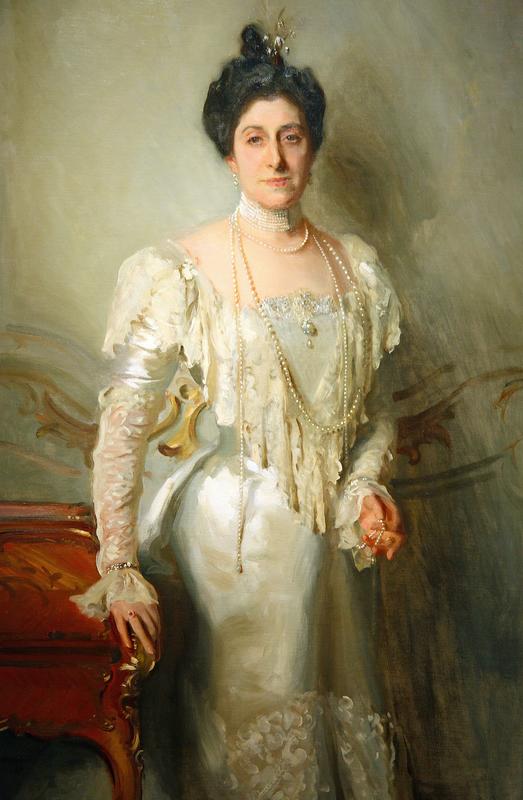More about Portrait of Mrs. Asher B. Wertheimer

Contributor
John Singer Sargent made a living painting rich people's portraits.
In the winter of 1898, Sargent kept himself busy by painting several portraits of London’s best and brightest, including members of the wealthy Asher Wertheimer clan, a Jewish family in Great Britain. Asher, a fine art dealer, commissioned Sargent to paint twelve portraits of the family from 1898 to 1908. Not only that, but he even painted the pets as well. Sargent, who often dined with the family in their London home, did good business with the Wertheimers. He even inscribed some of his Venetian watercolors to the fam; notably, he gave at least one to Flora, the subject of Portrait of Mrs. Asher B. Wertheimer.
Portrait of Mrs. Asher B. Wertheimer was commissioned to celebrate the couple’s twenty-five year anniversary of marriage. Asher Wertheimer had been painted by Sargent first, and now it’s his wife’s turn. Both portraits share some similarities: the frames were matching, and they each held something in their hands. But the Wertheimer family weren’t so keen on Sargent’s portrayal of their beloved Mrs. Asher B. In 1903, when Sargent released a catalogue of his work, he didn’t include the portrait, and he repainted her the following year.
In the 1904 portrait, Flora looked notably older, yet the family preferred this portrait and wanted it included in the British national collection (it can now be found at the Tate Britain). It is starkly different to this painting, which shows Flora in a lovely white dress, against a light backdrop, warmly smiling at the viewer. In the later portrayal, both her dress and the background of the picture are dark black, as though she was in mourning. Her face is pale, and she stares flatly, with no hint of a smile. This stern, melancholy portrayal may be chalked up to the tragedy the family endured in the years between the portraits. In 1902, their eldest son Edward died after eating a bad oyster on his honeymoon, and the second eldest, Alfred, died in the Boer War.
Sources
- Artlyst, “Lady Rudolph Churchill Portrait by John Singer Sargent offered by Provincial Auctioneer,” Artlyst, January 13, 2014. Accessed August 18, 2021. https://www.artlyst.com/news/lady-randolph-churchill-portrait-by-john-s…
- Fairbrother, Trevor J. John Singer Sargent: The Sensualist. Seattle, WA: Seattle Art Museum, 2000.
- Jean Strouse, “Sargent and His People,” The New York Review, October 8, 2015. Accessed August 18, 2021. https://www.nybooks.com/articles/2015/10/08/john-singer-sargent-and-his…
- Ormond, Richard, Kilmurray, Elaine. John Singer Sargent: Venetian Figures and Landscapes, 1898-1913. New Haven: Yale University Press, 2009.
- Donald Wigal. Sargent. Parkstone International, 2011.











